If nothing else, Dune is big.
Denis Villeneuve’s adaptation of the science fiction classic is an incredible undertaking. Estimates place the film’s budget at around $165 million. The film has a mammoth 155-minute runtime. The film has been released in multiple formats, from a simultaneous streaming release to a glorious IMAX presentation. Although set against the backdrop of a distant future, Dune is a triumphant love letter to old-fashioned Hollywood spectacle. It was even filmed in the same desert as in Lawrence of Arabia.
In many ways, Villeneuve’s Dune feels like a throwback. This is appropriate, given that David Lynch’s Dune was also something of a nostalgic invocation of classic science fiction and biblical epics. With its scale and scope, Villeneuve’s Dune recalls the widescreen epics of the 1950s and 1960s. It feels of a piece with the western and biblical adventures that would feature characters wandering harsh and rugged desert landscapes.
It exists in a similar context. One of the driving factors behind the emergence of these widescreen epics during the middle of the 20th century was a response to the birth of television and the threat that cinema perceived from the younger medium. The widescreen format was designed to offer audiences a sense of scale that could not be replicated on a television set at home, selling cinema as a unique experience that offered something different from what television offered.
There is perhaps a similar anxiety at work in Dune. Villeneuve has passionately argued that his film “has been dreamed, designed and shot thinking IMAX.” When it was announced the film would be streaming simultaneously on HBO Max, Villeneuve wrote a column in Variety voicing his frustration. Star Rebecca Ferguson argued there was “no fucking discussion” about the best way to experience Dune. It is a film that argues for the biggest possible screen, at a time when the industry is in flux.
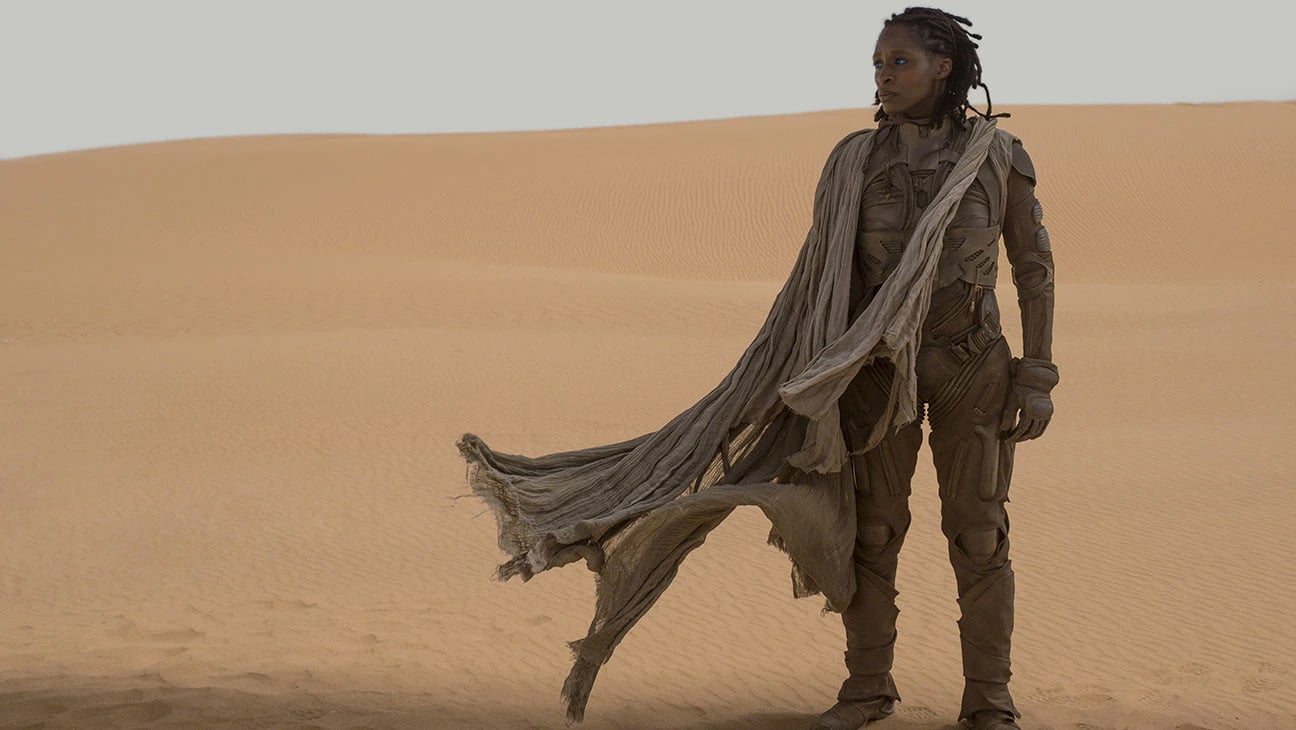
There is more to the size and spectacle of Dune than simple affirmation of the power of cinema. Even watching Dune on the biggest possible screen, there is a persistent sense that the movie is too big to be contained within even those generous confines. After all, despite a runtime over two-and-a-half hours, Dune isn’t even a complete story. The film’s own narrative cannot be contained within the IMAX frame.
This is most obvious in how Villeneuve and cinematographer Greig Fraser frame their shots. Often, the extremely wide shots in Dune are still not large enough to capture the fullness of what is happening. They suggest a scale that exists beyond the capacity of the screen to hold. To pick an example, Dune takes its time revealing the sandworm, one of the most recognizable parts of the Dune mythos. If audiences know anything about Dune, it’s the giant sandworm.
The first time the audience gets to see the sandworm, during a hectic evacuation of a spice miner, the worm’s maw takes up more than the entire frame. It is awe-inspiring. The second significant encounter with the worm is even more intense, as it swallows the ground out from planetologist Liet-Kynes (Sharon Duncan-Brewster) and her would-be assassins. Even the film’s third big worm-based set piece takes its time in revealing the full scale of the creature.
This third encounter takes place at night, with Paul (Timothée Chalamet) and his mother Jessica (Ferguson) fleeing across the desert from an incoming worm. As the two find their footing on a rock outcropping, the worm bursts through the surface. Villeneuve and Fraser keep Paul and Jessica in the frame, but they are tiny. The worm towers over them. However, even in that wide shot, Villeneuve cannot fit the full shot of the worm’s mouth. Dune has to pull back and refocus once again.
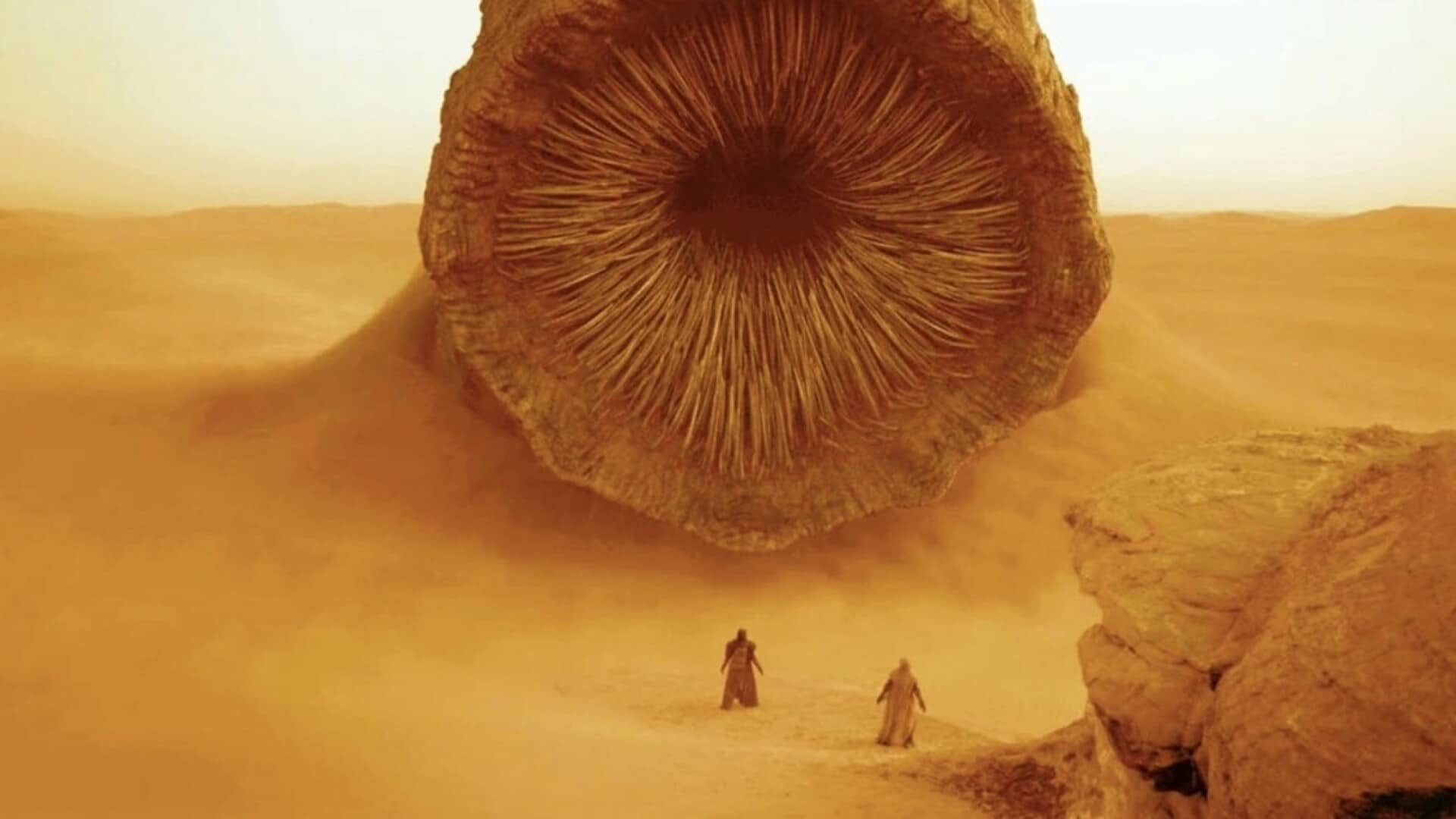
The worm is not the only element that Dune treats in this manner. Villeneuve frequently alternates between intense close-ups on his actors and wide shots that suggest even more activity beyond the borders of the frame. The use of IMAX for close-ups is still relatively unconventional, as the format has traditionally been used to convey scale rather than intimacy. Villeneuve is borrowing several cues from Christopher Nolan’s use of the format in movies like The Dark Knight and Interstellar.
“IMAX creates that insane verticality that really can crush you or create vertigo,” Villeneuve explains of his use of close-ups in the format. “What amazed me the most about IMAX is the intimacy that it does create with characters in close-up. You know when a human being is too close to you, you get this impression that you’re suddenly in a very intimate, private space?” It creates a palpable contrast between the intense claustrophobia experienced by the characters and the wide spaces they inhabit.
Indeed, characters are often obscured in wide shots. When the camera pulls back enough to show a character’s body, they are often blurred or out of focus. After a visit from the Reverend Mother (Charlotte Rampling), Paul and Jessica argue in the evening fog. Standing only meters from one another, they can barely see each other. When Rabban Harkonnen (Dave Bautista) confronts his uncle the Baron (Stellan Skarsgård), wide shots obscure the Baron’s form and shape.
Even in brightly lit environments, it can be hard to see the details of characters caught in the light. After the rescue of the spice mining crew, Liet-Kynes stands in the loading bay, her body in silhouette against the planet’s harsh sun. In the world of Dune, characters are either so uncomfortably close that they take up all of the frame or standing so far away that they are difficult to read and understand.
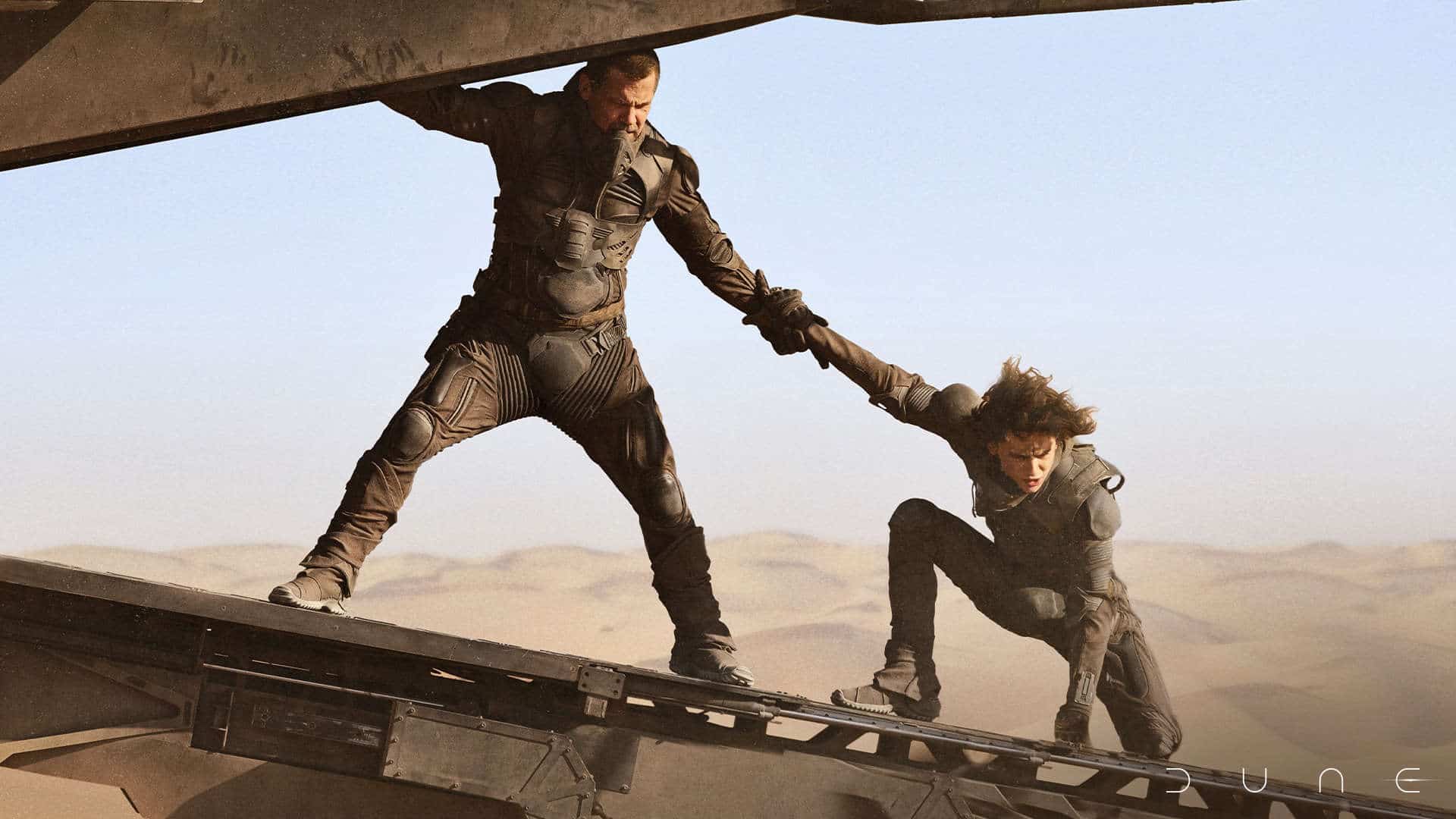
Even the interior spaces in Dune are vast and cavernous. The palace on Arrakis is full of huge rooms and seemingly larger corridors. It’s not hard to believe that the Harkonnen and Sardaukar troops can get so deep inside the compound without anyone realizing. When Duke Leto Atreides (Oscar Isaac) leaves his room in the middle of the night, it is like he has stepped into an airplane hangar. However, these spaces are not freeing. Instead, they serve to emphasize how small these characters are.
Ironically, it is only out in the desert that freedom exists. Villeneuve first read Dune when he was a young teenager, and he claims that the book was a touchstone for him. It’s interesting how frequently the image of the desert recurs in Villeneuve’s filmography: It’s the setting of Incendies, the vast frontier in Sicario, the spiritual wasteland in Blade Runner 2049. Perhaps Dune and Arrakis really have been calling to the director across his filmography.
Asked to comment on his fascination with deserts, Villeneuve has explained that deserts “reflect your interiority, and the deeper you go in the desert, the deeper you go in yourself.” Playing into the religious themes of the source material, the desert becomes the site of Paul’s rebirth. He tunnels out of a tent buried in a sand dune, towards the light. The voice whispering in the desert states, “Paul Atreides must die for the Kwisatz Haderach to rise.”
In the desert, Paul seems to become one with the planet. He touches its surface, and he hears ancient voices speaking through it and guiding him. Appropriately enough, it evokes Martin Scorsese’s The Last Temptation of Christ. Paul himself dies and is reborn through his killing of Jamis (Babs Olusanmokun). “When you take a life, you take your own,” the voices promise. Symbolically, the Kwisatz Haderach is baptized in blood rather than water. Blood is easier to find on Arrakis.
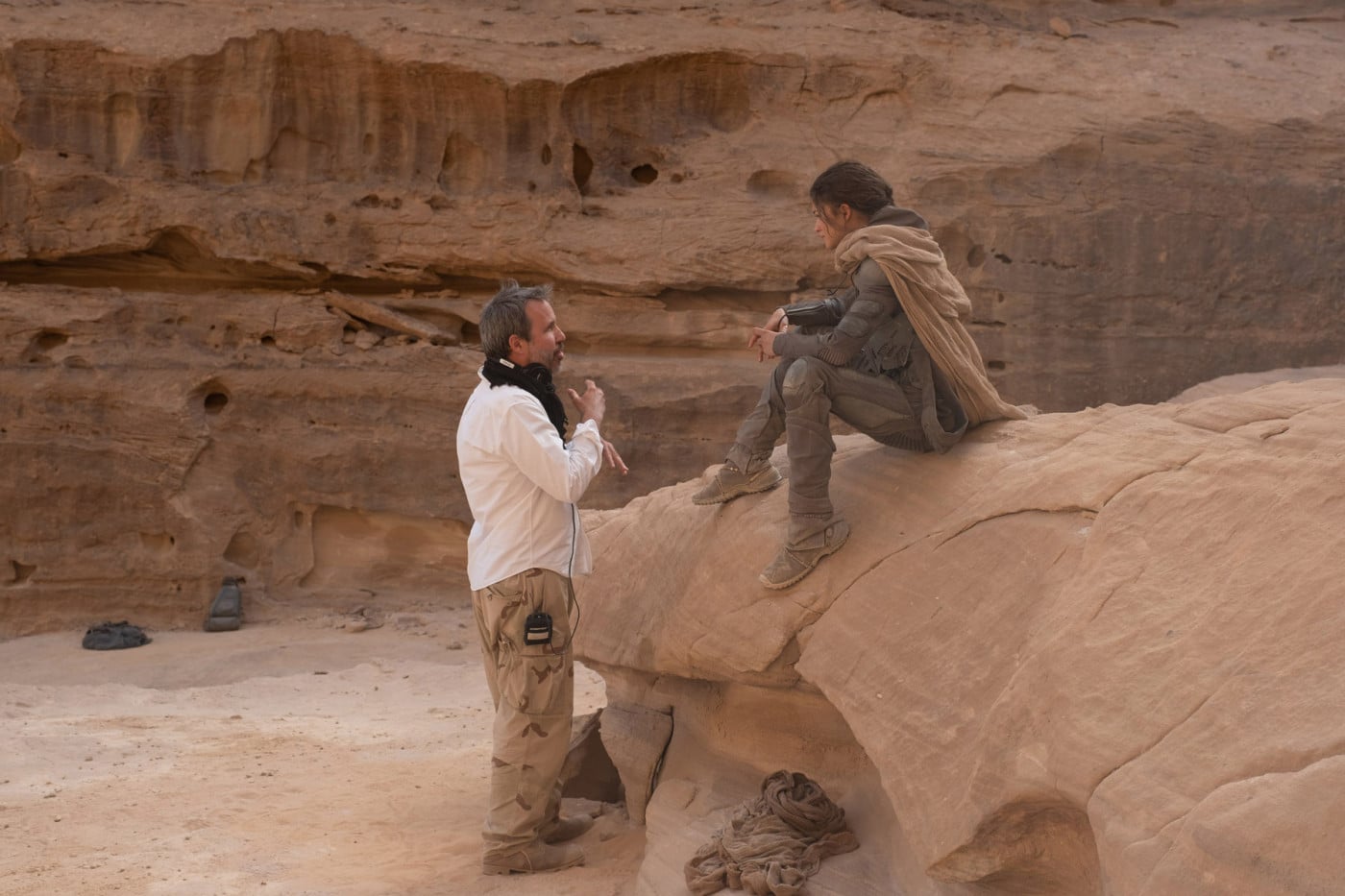
The beauty of Dune is that all of this scale and spectacle does not exist purely for its own sake. It does not even exist as a reminder of the power of cinema as a medium to deliver on this scale. It ties into the larger themes of the story. Villeneuve and Fraser use the visual language of Dune to communicate its core themes and ideas to the audience. Its sheer size and magnitude reflects what Dune is fundamentally about.
Throughout Dune, Villeneuve uses the frame cleverly. Frequently, objects will emerge from the background of shots: the Atreides ships rising from the depths, the Baron hovering in the air to gloat over the Duke, even Duncan Idaho (Jason Momoa) rising up for one last fight. Often these figures and shapes are blurred, their motion obvious to the audience, but the scale and detail obscured by depth of field to create an uncanny effect.
This is how Paul sees the world. Paul is haunted by dreams and visions that he cannot understand. Sometimes those dreams come true. Sometimes they seem to suggest futures that can never happen. Paul has no idea what they mean or what he can do about them. He cannot understand the enormity of the situation in which he has found himself. However, this theme extends beyond Paul himself. Dune is driven by byzantine plots that surround and consume the characters.
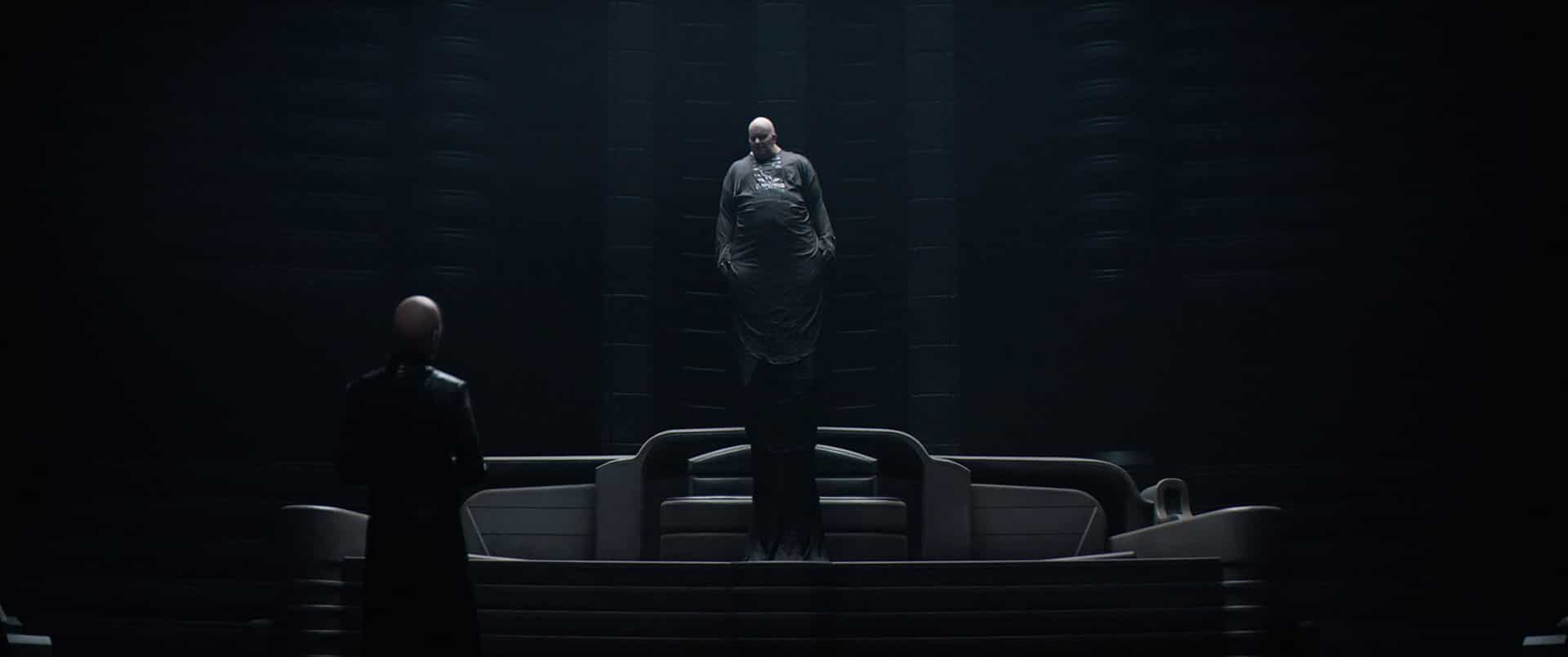
The Atreides move to Arrakis is part of a scheme by the Emperor and the Baron to trap and murder the entire Atreides family. When Rabban confronts the Baron about this, he is struggling to understand. The machinations of the Baron’s plan are oblique to Rabban, just as the Baron himself is obscured. Similarly, when Paul confronts Jessica in the fog, he is trying to understand what the Bene Gesserit have planned for him, their own schemes as difficult to discern as Paul himself.
In that moment where Kynes is obscured in the hangar bay, she is concealing her own part in the conspiracy against the Atreides. It’s notable that this shadowy sequence is visually contrasted with a triumphant moment later on when Kynes vows to reveal the betrayal on Arrakis, a glorious wide shot of Kynes stepping out into the desert. She can finally stand in the light. She can discover who she is, free from the systems and structures that ensnared her in the city of Arrakeen.
Dune is a big movie. It is occasionally and actively too big. However, that’s the point. Dune is a movie about characters trying to survive in a world that operates at a scale beyond human comprehension, facing both forces of nature and systems of oppression that are too large to be neatly framed even within the IMAX aspect ratio. Maybe in the desert they can find a sort of freedom — or at least themselves.

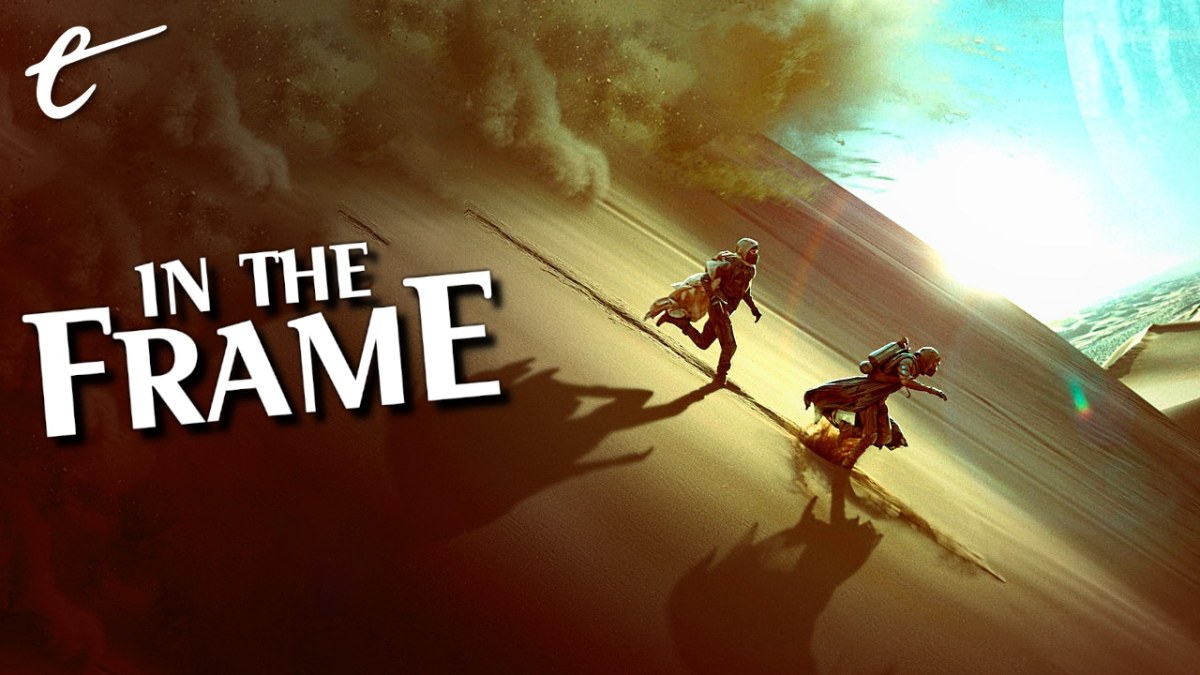




Published: Nov 1, 2021 11:00 am